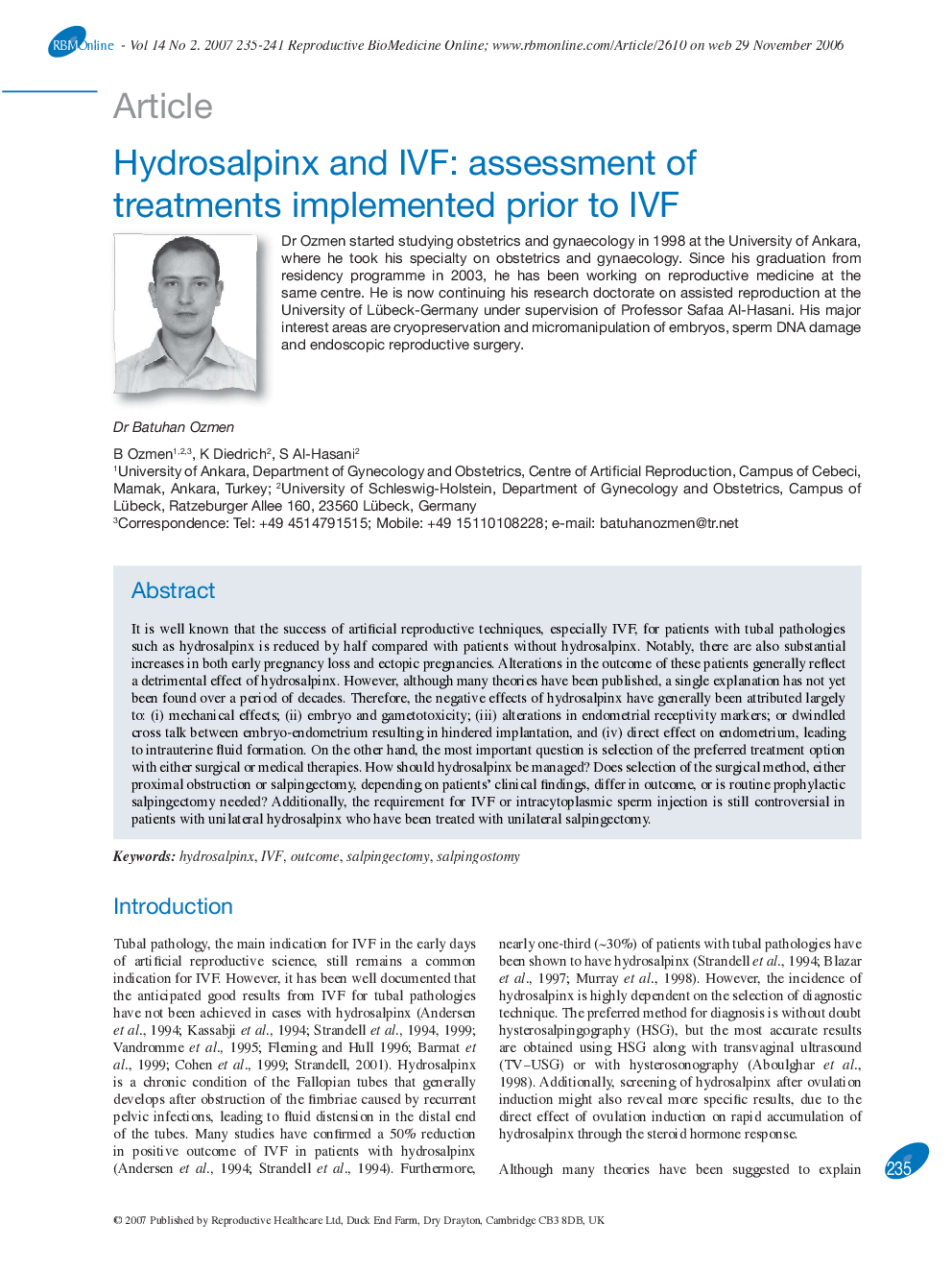| Article ID | Journal | Published Year | Pages | File Type |
|---|---|---|---|---|
| 3973232 | Reproductive BioMedicine Online | 2007 | 7 Pages |
It is well known that the success of artificial reproductive techniques, especially IVF, for patients with tubal pathologies such as hydrosalpinx is reduced by half compared with patients without hydrosalpinx. Notably, there are also substantial increases in both early pregnancy loss and ectopic pregnancies. Alterations in the outcome of these patients generally reflect a detrimental effect of hydrosalpinx. However, although many theories have been published, a single explanation has not yet been found over a period of decades. Therefore, the negative effects of hydrosalpinx have generally been attributed largely to: (i) mechanical effects; (ii) embryo and gametotoxicity; (iii) alterations in endometrial receptivity markers; or dwindled cross talk between embryo-endometrium resulting in hindered implantation, and (iv) direct effect on endometrium, leading to intrauterine fluid formation. On the other hand, the most important question is selection of the preferred treatment option with either surgical or medical therapies. How should hydrosalpinx be managed? Does selection of the surgical method, either proximal obstruction or salpingectomy, depending on patients' clinical findings, differ in outcome, or is routine prophylactic salpingectomy needed? Additionally, the requirement for IVF or intracytoplasmic sperm injection is still controversial in patients with unilateral hydrosalpinx who have been treated with unilateral salpingectomy.
